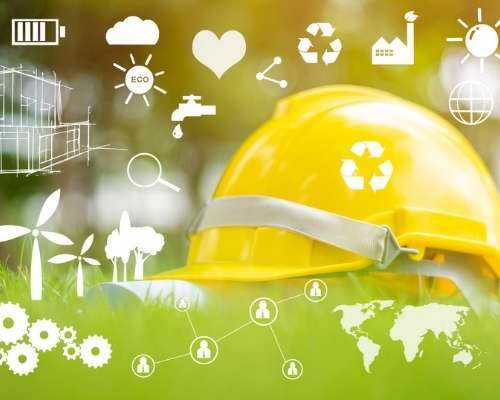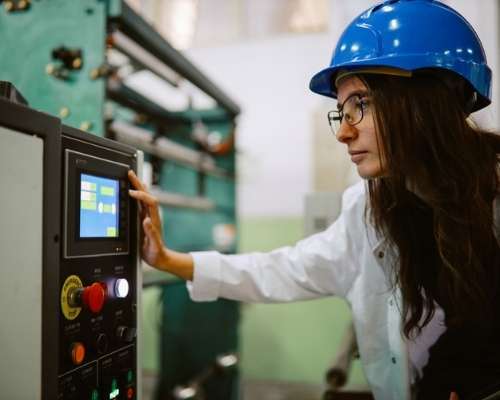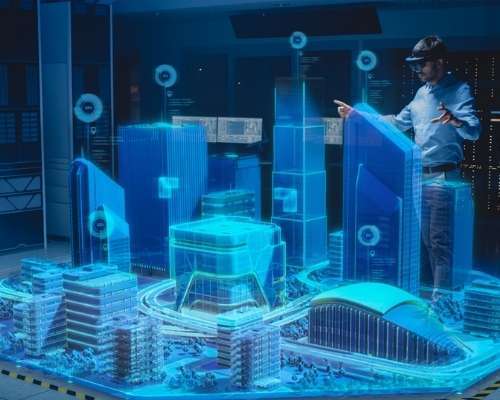4 Minute Read
September 18, 2018
0%

Sustainability is becoming a top priority in the construction industry. Many companies are seeking ways to innovate their operations and become more environmentally friendly, especially as new technologies make it easier to collect information about emissions and other environmental factors. In today's digital environment, construction sustainability can’t be ignored.
Embracing construction sustainability is crucial to the future of the industry, and it’s apparent in how sustainability reporting requirements for companies and mandatory disclosures by financial services firms are expanding rapidly.
In order to stay competitive in the industry, it’s important to understand both the importance of sustainability and the positive impacts of construction technology.

Sustainable construction is about more than reducing emissions and building good publicity. Those things are important, of course, but the implications of sustainability have a far-reaching ripple effect. This impacts the environment, the health of communities worldwide, construction’s labor shortage and even the outlook for future projects.
Any company that wants a future in the industry should be interested in green construction. The innovations and strategies created by green construction initiatives are reducing harmful environmental footprints. Green construction also saves companies money, builds positive reputations and develops cutting-edge buildings and infrastructure.
Improving sustainability efforts also could attract young people to building careers. Research has found that Gen-Z’s career choices are highly influenced by their concern for the environment. Construction companies that move toward more sustainable practices could eliminate the labor shortage.
Additionally, reducing waste and emissions will ultimately result in cost savings. Construction companies that optimize their fuel usage to cut back on emissions will also save money. Likewise, making better use of resources will optimize spending on materials and a higher ROI on projects. This will impress clients and stakeholders, more of whom are working to meet consumers’ demands for sustainability.

Digitalization has been on the rise in construction for several years. This process often starts by going paperless and utilizing digital documentation instead. Reducing the use of paper is a great step toward sustainable construction. Not only does going paperless preserve trees around the world, but it also increases organization and efficiency.
It may not seem like a big deal on a daily basis, but going paperless can make a huge difference in the fight against climate change. Every year, Americans throw away paper in volumes equivalent to an estimated 1 billion trees. Recycling and reducing paper usage helps preserve forests, which are crucial to controlling greenhouse gasses.
Paperless technology is a key to making sustainable construction a reality, no matter a team’s size or scale. Technology is enabling sustainability initiatives across various industries, from infrastructure to agriculture.
The positive impacts of construction technology also include accurate automation. Sustainable construction technology increases efficiency and productivity by moving formerly manual processes to automated systems.
For example, construction management software can automate the typically paper-heavy construction timecard and payroll processes. A cloud-based application can collect digital timecards from the field, keep track of employees’ hours, accurately calculate paycheck and tax figures, distribute paychecks, and file payroll documents in convenient digital workflows.
Sustainable construction technology can also reduce waste on-site. The software can pinpoint ways to decrease waste and use resources more effectively by tracking exactly how materials are used on-site. Project managers can also follow the progress and impact of sustainability initiatives over time by monitoring data such as fuel, energy consumption and materials expenses.
One great example of this is the use of telematics for tracking equipment fuel consumption. Telematics is the bridge between physical equipment and the cloud. It allows fuel consumption to be monitored in real-time. Team members can also monitor idle time, performance, location, and numerous other details. These features let construction teams optimize fuel utilization, reduce emissions and expenses, and engage in predictive maintenance. This will result in fewer expensive breakdowns and less waste on broken parts and repairs.
Companies in all niches of the industry are seeing the real-world positive impacts of construction technology. These innovations aid the planet while also helping businesses save money and make the most of every resource and minute on the job. Here’s a look at two examples:

Stetner Electric is using the connected, cloud-based Trimble Construction One suite to go paperless in the office. Construction management software allowed it to reduce the time spent on payroll management by 25% and save tens of thousands of dollars a year. By implementing Trimble ePayments, Stetner Electric’s accounts payable tasks also became 99% paperless through digitalization.
This switch to Trimble Viewpoint’s construction management software increases efficiency and improves Stetner Electric’s green construction impact.

Advanced Technology Group (ATG), a mechanical contractor, also unlocked tremendous benefits by digitizing its accounting and operations processes and moving construction workflows to the cloud with Trimble Construction One. Chief Financial Officer Jim Voss said of the switch, “The lack of automation and connectivity between systems was causing a tremendous amount of manual work and frustration across our company.” Employees were spending valuable time reentering information from paper and spreadsheets, and moving it between several disconnected systems to get their jobs done. This was inefficient and a poor use of resources.
ATG collected all its data in one place by moving to centralized construction management software. This allowed employees to work more efficiently, increasing productivity. Additionally, with all its information on hand for rapid analysis, ATG could unlock valuable insights about its operations and accounting processes.
Real-time data and advanced analytics allow construction companies to become more sustainable by discovering areas where resources are being underutilized. Real-time data collection and analysis on this level is only possible with the help of technology. The investment is well worth it, though, as these companies can attest to. Working toward sustainable construction will help construction teams work smarter and more effectively.
Implementing construction management software is only one piece of the puzzle. Going paperless and reducing waste is a great foundation for sustainability. Companies looking to improve their carbon footprint even further have four more strategies to consider.

3D printed construction is only just beginning to go mainstream, but it has the potential to change the industry. Additive manufacturing minimizes waste and is less disruptive to local environments, making it a key technology for green construction. Careers in 3D printed construction may be particularly attractive to young people due to the combination of technology and positive environmental impact.
Green building is actually a philosophy in and of itself with standards for what qualifies as an environmentally friendly structure. LEED, or Leadership in Energy and Environmental Design, is a third-party certification program that offers authoritative sustainability ratings for construction projects. LEED certification can impress clients and consumers.

One of the pillars of green building is finding ways to incorporate reclaimed or recycled materials into projects. This trend is gaining momentum, with more U.S. cities implementing deconstruction policies for older structures containing valuable reusable materials. Successful projects lead the way, such as the Kendeda Building at Georgia Tech, which incorporated 25,000 linear feet of wood reclaimed from Atlanta’s film sets.
Prefabricated and modular construction is taking off due to its efficiency and sustainability advantages. Both of these construction methods utilize streamlined additive manufacturing tactics that minimize waste. Prefab construction also creates less noise pollution and uses less energy than traditional construction methods.

Sustainable construction starts with implementing everyday solutions that reduce waste and optimize the use of every resource. Through innovative tools like construction management software, construction teams can become more sustainable while improving their operations and reducing expenses.
Companies in every corner of the industry are already seeing the positive impacts of construction technology for green building initiatives. Digital tools can make a huge difference on any project, from more effective teamwork to unrivaled cost savings and carbon footprint reduction. Construction businesses that utilize management software and other pro-sustainability technology may even be able to earn prestigious green building certifications.
Soon enough, sustainable building practices will become the standard in construction, rather than a niche approach. Companies can stand out as leaders by getting ahead of this trend and implementing construction management software on their projects. Green construction is the future of the industry, with real-world benefits for companies, clients, communities and the world around us.
4 Minute Read
September 18, 2018
4 Minute Read
July 23, 2018
4 Minute Read
May 17, 2017